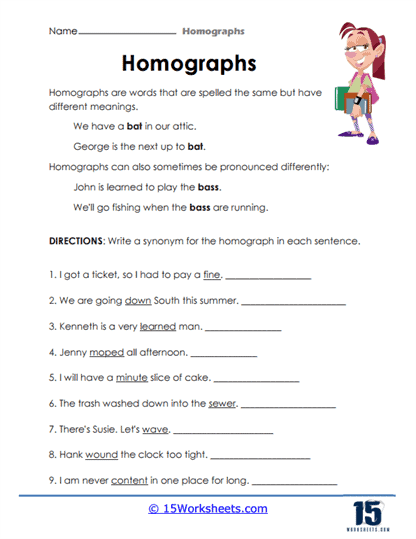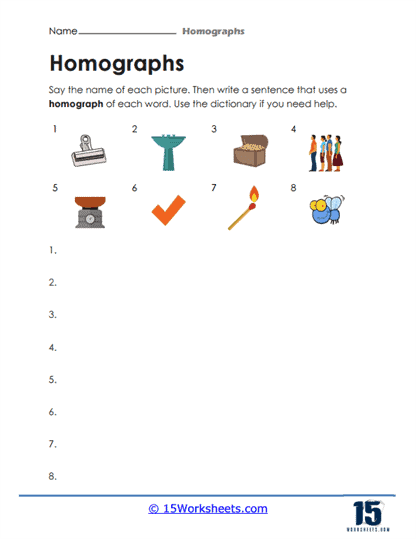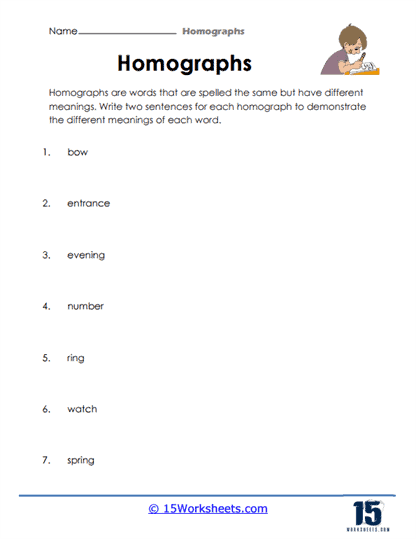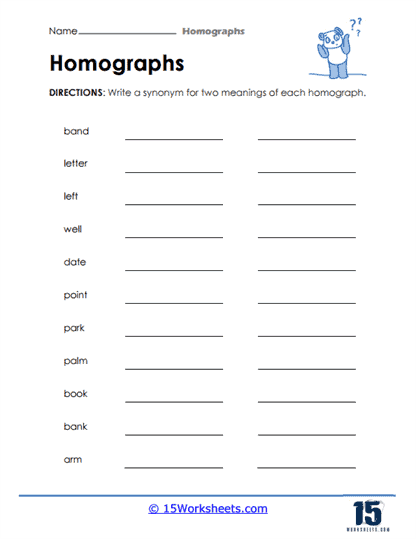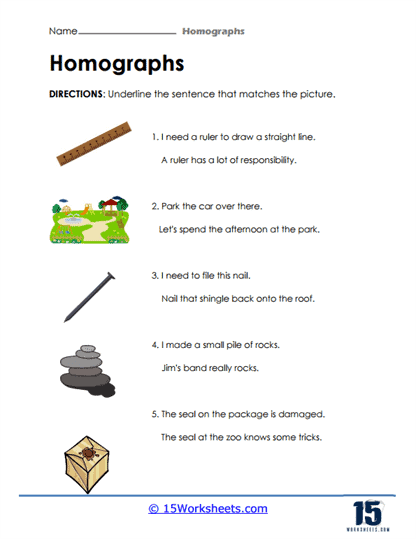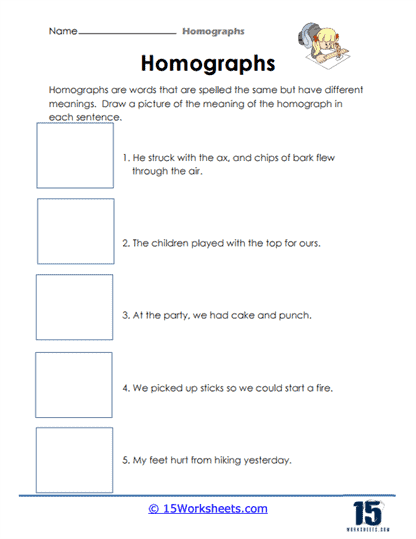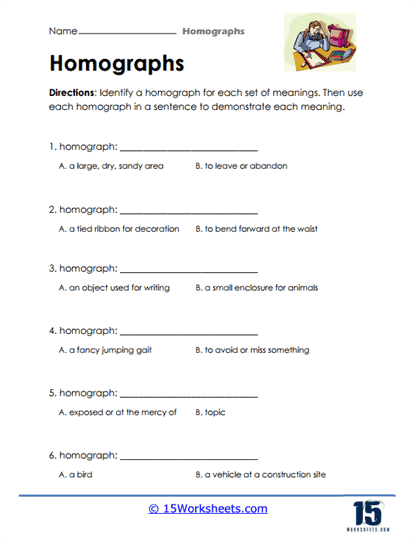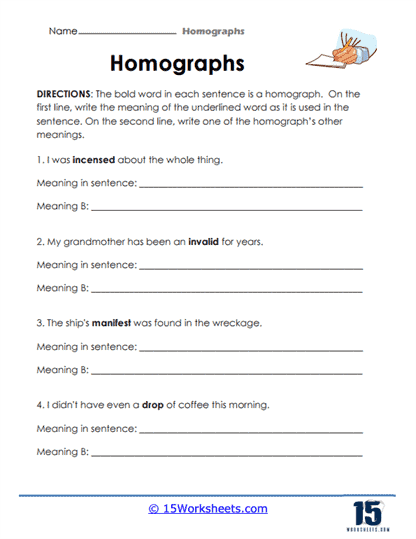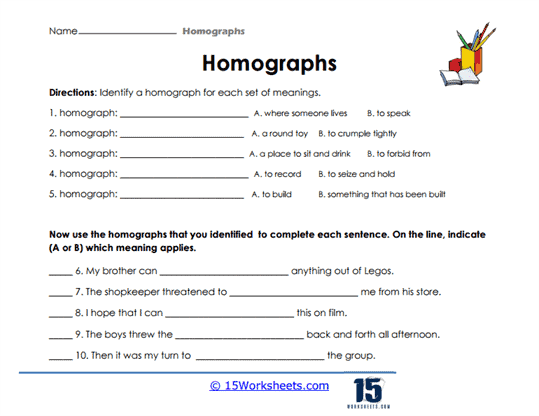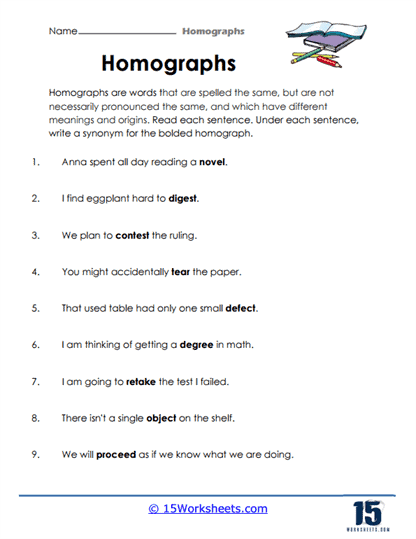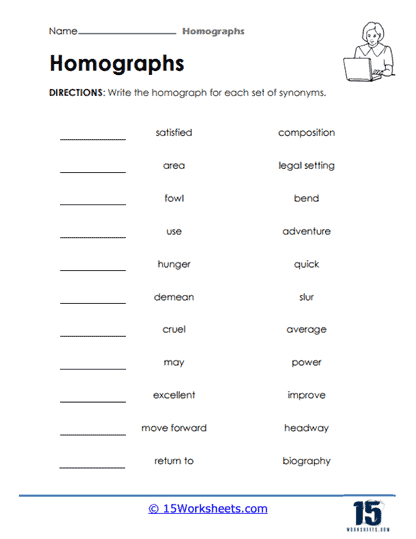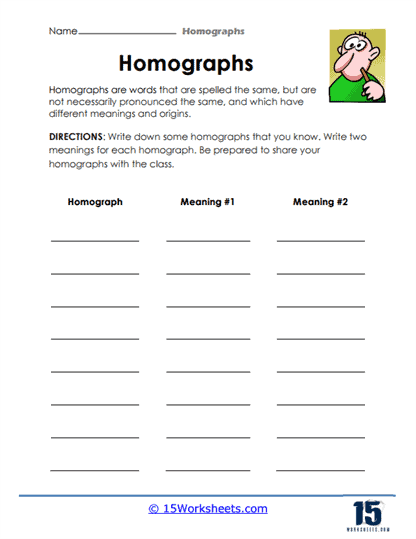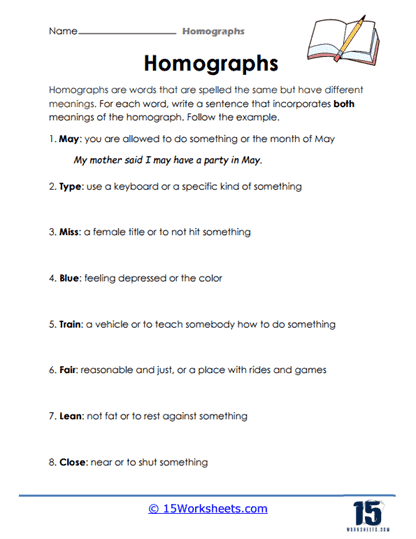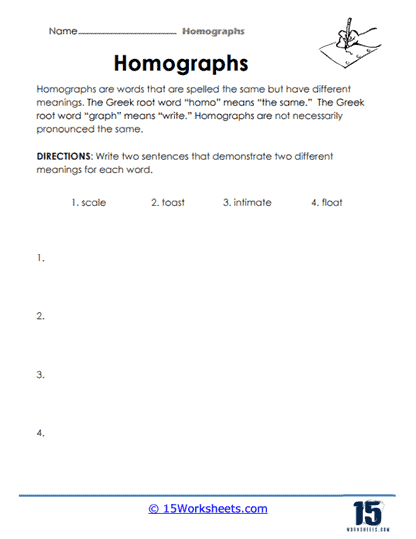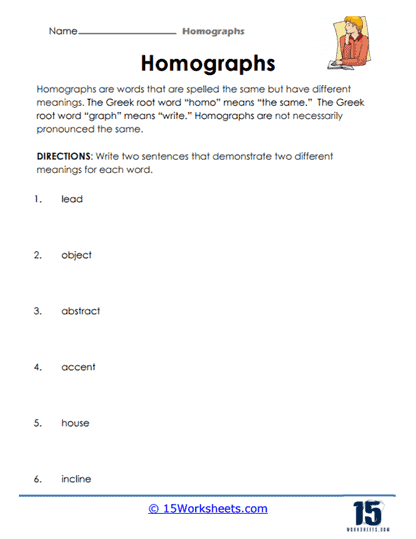Homographs Worksheets
All About These 15 Worksheets
Homographs are words that are spelled the same but have different meanings and may or may not be pronounced the same. These Homographs worksheets for students will include a variety of exercises to help them learn how to differentiate between different types of homographs. These exercises include matching homographs with their definitions or correct contexts, filling in the blanks with the correct homograph, or rewriting sentences to correct errors in usage. By completing these worksheets, students will:
- Understand the form and function of homographs;
- Use homographs in their own sentences which correspond to the intended meaning;
- Be familiar with the commonly used homographs;
- And complete sentences by supplying them with the appropriate homographs.
Overall, worksheets on homographs are a helpful tool for students to improve their vocabulary and communication skills in English.
What are Homographs and why do they matter?
Homographs are words that are spelled the same but have different meanings and often different pronunciations. For example, “bow” can refer to a weapon used for shooting arrows or to a decorative knot tied with a ribbon. Homographs can be difficult to identify and use correctly in writing and speaking, which is why they matter in language learning.
Here are some examples of commonly used homographs in English:
- Bow – A weapon used for shooting arrows, or a decorative knot tied with a ribbon.
- Close – To shut or seal, or near in proximity.
- Object – A thing, or to express disapproval or disagreement.
- Read – To look at and comprehend written or printed material, or to say aloud the written or printed material.
- Tear – To rip apart, or a drop of salty liquid that comes out of the eye when crying.
- Wind – The movement of air, or to turn or twist something.
Learning about homographs is important for several reasons. To begin with, using the wrong homograph in a sentence can change its meaning or create confusion, making effective communication difficult. Being aware of homographs can also improve overall language skills and vocabulary, allowing students to express themselves more accurately and with greater nuance. Not only these, homographs are an important aspect of standardized testing and assessments as well, such as the SAT and ACT, which often include questions related to their usage.
In summary, homographs are an important aspect of English language learning because they can be confusing and difficult to use correctly. Learning about homographs can improve communication skills and vocabulary, and is an essential part of achieving language proficiency.

